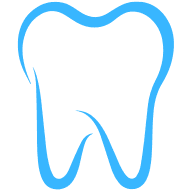4 Effective Flossing Techniques for Better Oral Hygiene
Struggling to make flossing a seamless part of your daily routine? Dentists and orthodontists share their top tips to help make flossing more effective and less of a chore. Discover expert advice ranging from using floss picks or water flossers to choosing a floss that's right for you, with a total of four invaluable insights. Read on to boost your oral hygiene with strategies tailored to individual needs and abilities.
- Use Floss Picks or Water Flossers
- Consider Individual Needs and Abilities
- Floss Correctly for Better Oral Hygiene
- Choose a Floss You Will Use
Use Floss Picks or Water Flossers
As an experienced dentist with years of experience, I often encounter patients who struggle with flossing due to tight spaces between their teeth or a lack of dexterity. My top tip is to use floss picks or water flossers as alternatives to traditional string floss. Floss picks are easy to hold and maneuver, especially for people with limited hand coordination. Water flossers, on the other hand, use a gentle stream of water to clean between teeth and along the gumline, which can be particularly effective for people with braces or sensitive gums. Another technique I recommend is wrapping the floss around your middle fingers and using your thumbs and index fingers to guide it between the teeth. Make a gentle C-shape around each tooth and slide the floss up and down to clean the sides thoroughly. Many people mistakenly snap the floss into place, which can hurt the gums, so always be gentle. Finally, for those who dislike the process altogether, I suggest flossing while doing something enjoyable, like watching TV. This turns flossing into a more relaxed habit rather than a chore. Combining these techniques with consistency will greatly improve oral hygiene and prevent issues like gum disease or cavities.

Consider Individual Needs and Abilities
Flossing is critical for maintaining healthy gums. When thinking of flossing, most of us picture string floss. While traditional string flossing is inexpensive and highly effective, it may not work for everyone. It can take time to master, requires a certain level of manual dexterity to use correctly, and may not work in certain situations.
Innovations in flossing mean today's patients can choose a method that best suits their individual needs and abilities. Starting orthodontic treatment with braces is often the first time patients take flossing seriously and consider new methods. This is because flossing with braces is more challenging and time-consuming than without braces. There are two primary methods we recommend in these situations: 1) if a patient struggles with consistency in flossing and 2) when bathroom counter space is limited (a combined brush/flosser saves space). I also prefer corded over cordless water flossers due to their superior reservoir capacity, lighter nozzle, and consistent power.

Floss Correctly for Better Oral Hygiene
Many people think of flossing as an afterthought but it is actually one of the cornerstones of excellent oral hygiene. The trick is not only to floss but also to floss correctly - gently slide the floss between the teeth and curve it around each tooth to remove plaque and debris. You can also use floss holders for ease of use in the back areas. Don't be afraid to use long floss because too short floss can make cleaning difficult and cause you to lose motivation. Avoid hitting the floss hard against your gums as this can lead to irritation or even bleeding. Instead think of flossing as a gentle cleaning process where you take the time to get into the tight spaces where the toothbrush can't reach. With the right technique and consistency you can't only achieve healthier gums and fresher breath but also protect your teeth from cavities and gum disease in the long run.
Choose a Floss You Will Use
Flossing is a very important part of your oral hygiene, it is also one of the most difficult to be consistent with. There are several different types of floss that can differ in thickness, roughness, or type of material. Each of these probably has different strengths and weaknesses and it can be a little overwhelming to decide which to use. I've found that for my patients, the best one to use is just whatever you like the best and will be most likely to use consistently. As an orthodontic office, we have many patients using braces, clear aligners (like Invisalign), retainers, or other appliances that can make flossing even more time-consuming and annoying. Finding what you like best and will actually use is always the best method for choosing, and then just making sure you have plenty of it and keep it somewhere you can see it so you will be reminded to do it.



